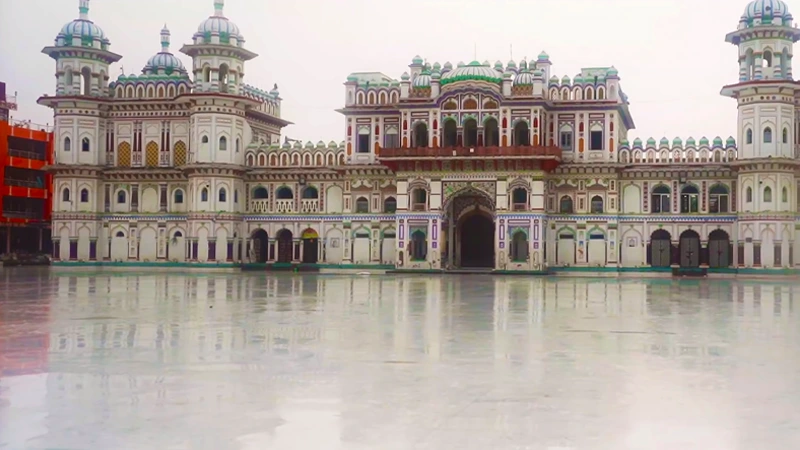Janakpur, which was once the capital of King Janak’s Kingdom of Mithila, was also called Janakpurdham. Janakpur Dham Nepal is a religious pilgrimage site in the Terai flatlands in south-central Nepal. It is where Janaki or Sita, the wife of Lord Ram, was born. Mithila was an ancient kingdom that is known for its temples, ponds, Mithila art, and lively festivals. The Janaki Mandir, which is a beautiful temple to Sita, is the main thing to see in Janakpur.
Janakpur in Nepal is a popular place for tourists to visit because it has nice weather, big, colorful festivals all year long, beautiful temple architecture, and friendly people. But there is more to Janakpur than just temples and monuments. People know that the city has a rich history, arts, language, and literature. It is the center of the Mithila civilization and a place where many different cultures, religions, and opportunities come together.
Janakpur Dham Nepal – Discover the Ancient Kingdom of Mithila
Queen Vrisha Bhanu, the Queen of Tikamgarh, built the beautiful temple in 1910 A.D. It is also named the Nau Lakha Mandir. The name “Nau Lakha,” which means “nine lakhs,” comes from the fact that it cost 900,000 rupees to build the temple at the time.
Sanyasi Shurkishordas, a famous poet and saint who is also the founder of the Janakpur Dham in Nepal, is often linked to the shrine. People say that Shurkishordas spent most of his life teaching the ideas in Sita Upashinad. People also believe that he discovered a golden statue of the Sita Goddess at the site in 1657, which led them to believe that Sita lived here for most of her life until she got married.
Janakpur in Nepal is a famous pilgrimage site for Hindus because it is mentioned in the Ramayana, an important Hindu book. People believe that Goddess Sita was born here, and it is also the destination of her marriage with Lord Ram. Janakpur Dham Nepal has more than seventy ponds, which is why it is also called the “City of Ponds.”
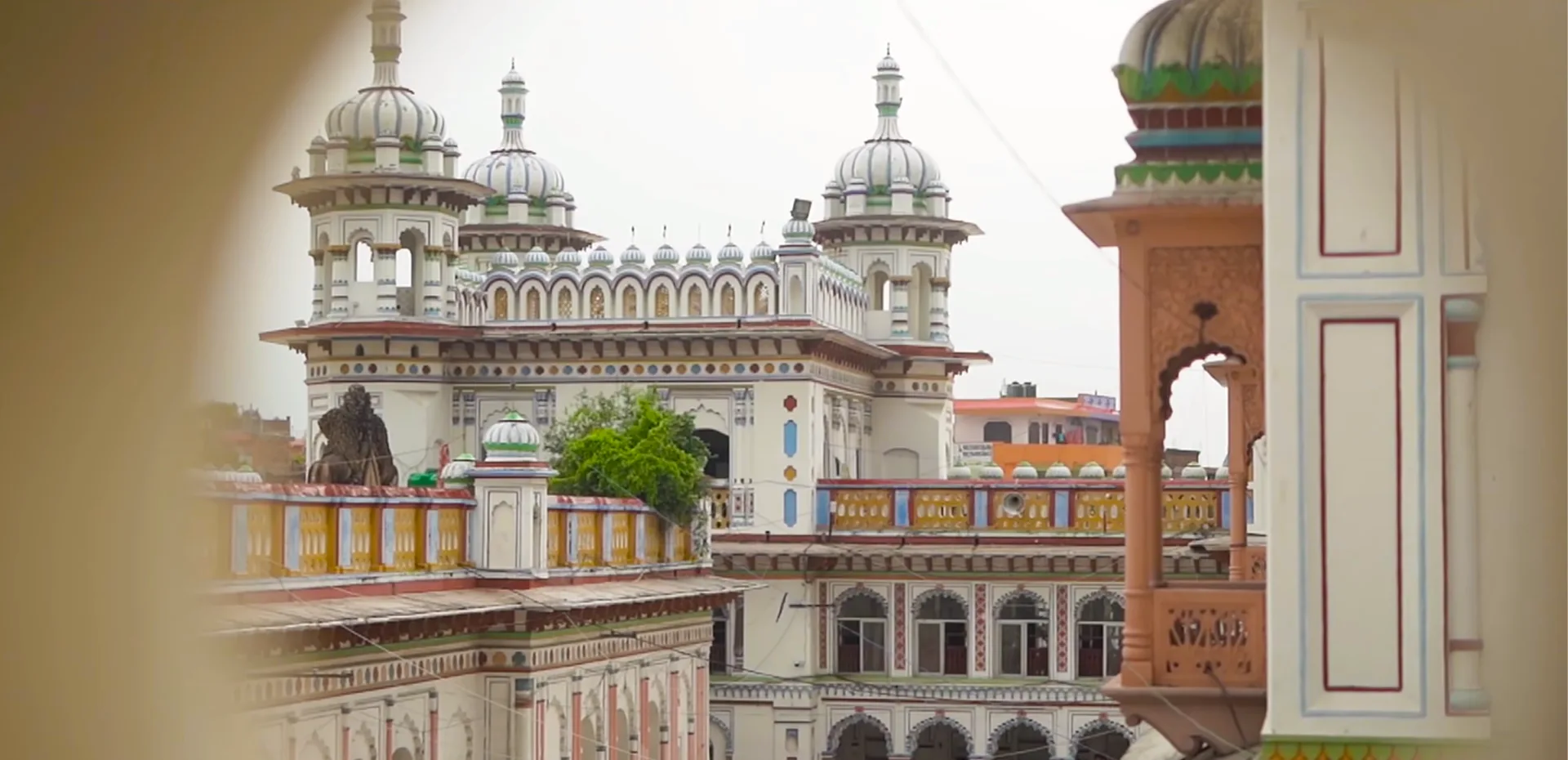
Significance of Janaki Mandir, Nepal
During her engagement, Janaki or Sita chose Lord Rama to be her husband. Their wedding took place in a nearby temple called Vivaha Mandap. People from all over the world travel to this holy Hindu temple, especially in November and December for Vivah Panchami. It is the city’s annual festival that celebrates the wedding of Sita and Rama with many sacred rites and ceremonies.
During the festive season, the temple is decorated with special art and lights, and every day, bhajans are sung. We can feel both the euphoric and spiritual atmospheres around the temple. Every year, thousands of people come to this holy city to see it.
The architecture of Janaki Temple
As you get closer to the spectacular temple, you discover that it is a white building with domes, pillars, and verandas that make it look like a beautiful palace. This gives you an idea of how beautiful the building is even before you go inside. It is a good idea to take a few minutes to look at the outside beauty. The beautiful temple is a unique mix of Hindu, Mughal, and Koiri styles of architecture. It is built completely of white marble and takes up more than 4800 square feet of space.
It is built in a style that combines Mughal and Hindu features. It is a three-story building constructed completely of stone and marble. To enter, you must pass through the 30-meter-high central gateway on the ground floor. Sixty rooms are decorated with beautiful lattice windows, colored glass, stunning paintings, and mesmerizing carvings. A golden statue of the goddess Sita was discovered in 1657, and it is believed that Sita resided there.
Once one has explored the sanctum sanctorum, the sannadhis, and the halls, one can continue their exploration of the temple complex by visiting the small shrines. These structures are known as sannadhis, and they contain statues of Lord Rama, another figure of Sita, Lakshmana, and Urmila, as well as King Janak and Queen Sunaina.
When you look around the remaining portion of the complex, behind the main shrine, you will see a group of black stones. These stones are called saligrams. King Janaka used to worship them when they were black and holy. They are thought to be very powerful, and you can usually find them in the homes of devotees who always do all the important rituals.
The priests of the temple let people pray to these holy stones, and they are also happy to talk about the saligrams, the shrine, and the story of the Ramayana.
How to Visit Janakpur Dham, Nepal

You can get to Janakpur Dham, Nepal in any way that makes you feel comfortable. Here are the ways you can get to Janakpur as part of your package.
Kathmandu to Janakpur Flight
The easiest way to get to Janakpur Dham Nepal is to fly to Kathmandu’s Tribhuvan International Airport and then take a domestic flight from there to Janakpur Airport. There is a Kathmandu to Janakpur flight between the two cities every day, and the whole trip does not take more than half an hour. There are several airlines, like Yeti Airlines, Buddha Air, and Sita Airlines, that fly small- to medium-sized planes.
Kathmandu to Janakpur Bus
From the Kalanki Bus Station and the Long Distance Bus Station in Gongobu, there are Janakpur to Kathmandu buses that go all the time between Kathmandu and Janakpur Dham. The whole trip takes about eight hours, so it is best to take a bus at night and get to Janakpur Road early in the morning.
How to Reach Janakpur Dham from India
India and Nepal, being neighbouring countries, do not require visas or passports for travel. There are several ways to travel from India to Janakpur, which are explained here.
India to Janakpur Rail
Sitamarhi Railway Station and Jaynagar Railway Station are only 45 and 30 kilometers distant from Janakpur Railway Station and were the sole railway lines linking India and Nepal. However, the line was shut down in 2014 for maintenance and expansion purposes. Then, visitors’ preference to travel changed from any major city in India to Jayanagar or Sitamarhi, and then drive the remaining distance to Janakpur Dham Nepal.
Now, again, from April 2, 2022, India and Nepal have once again been connected through the railway through the Jaynagar to Janakpur train.
India to Janakpur by Bus
The Indian cities of Sitamarhi and Jayanagar are also close enough to the border to allow for bus service to Janakpur Nepal. People may also choose to drive independently or hire a private taxi. Mahendra Highway and BP Koirala Highway to reach the Janakpur road for people who choose to drive alone.
India to Janakpur by Flight
People traveling from India to Janakpur by flight also have to enter Nepal through Tribhuvan International Airport in Kathmandu. Janakpur has no international airport, so there is no direct flight from India to Janakpur. However, the international airport of Kathmandu is connected to the domestic terminal of its airport, and daily flights operate between the two cities.
Places to Visit around Janakpur Dham Nepal
If you are in Nepal for the Nepal Temples and Pagodas Tour, the temples of Janakpur will provide you with unique cultural and religious perspectives. Janakpur, which is surrounded by the rivers Dudhmati, Jalad, Rato, Balan, and Kamala, is renowned for its temples and ponds.
The temples and other destinations to visit in Janakpur Dham Nepal are listed below.
Janaki Mandir
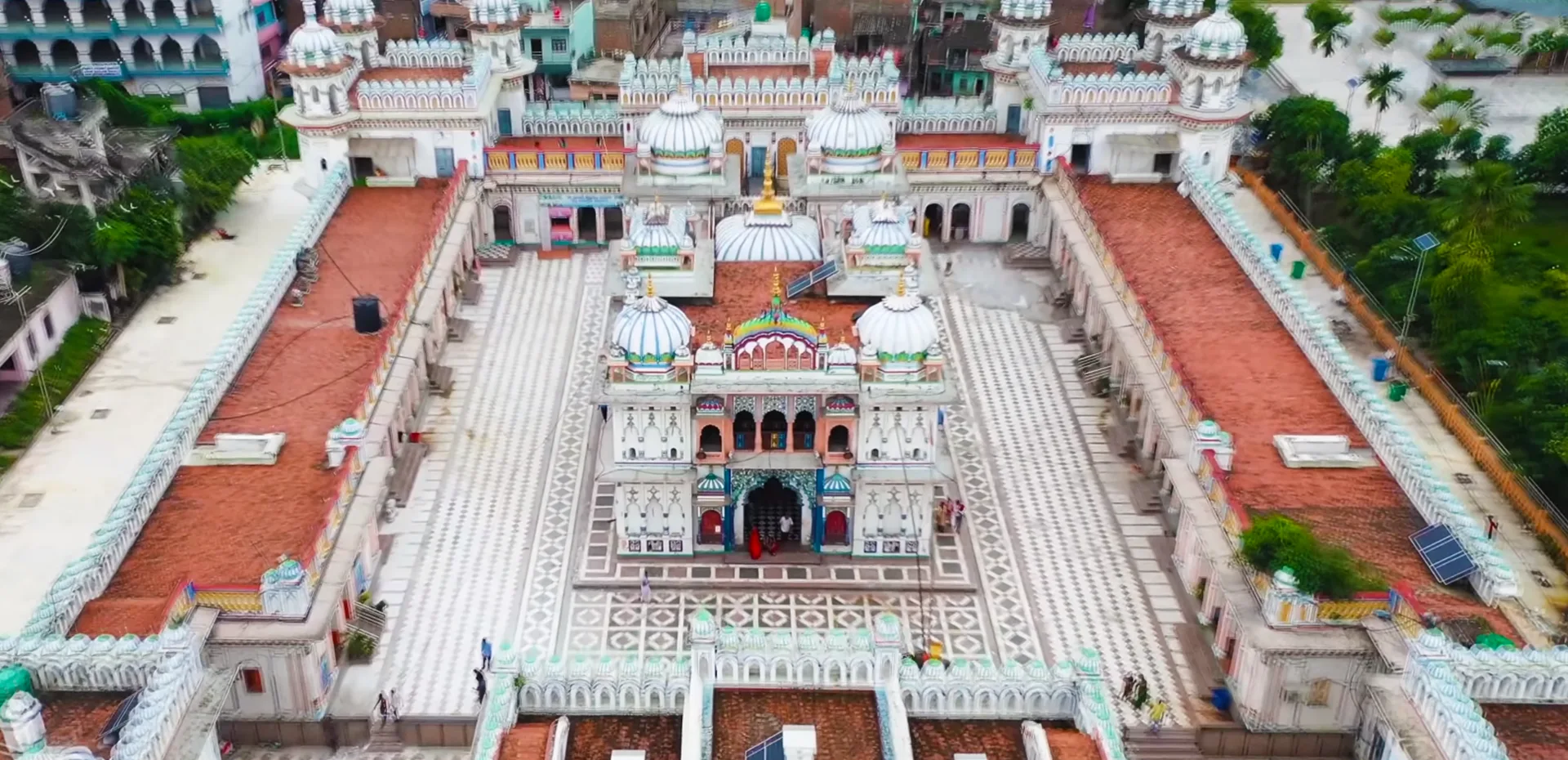
The beautiful white front of the Janaki Mandir is an example of Hindu-Koiri Nepali architecture. The three-story temple is made entirely of stones and marble. The 60 rooms inside are decorated with the Nepali flag, paintings, engravings, and magnificent lattice window frames and turrets.
During important occasions and festivals such as Ram Navami, Dashain, Deepawali, Vivah Panchami, and Holi, the Janaki temple is largely crowded with worshippers. Pilgrims travel from all across Nepal, Sri Lanka, and India to worship the Goddess, who is regarded as a paragon of bravery, purity, kindness, devotion, and feminine qualities.
Ram Mandir
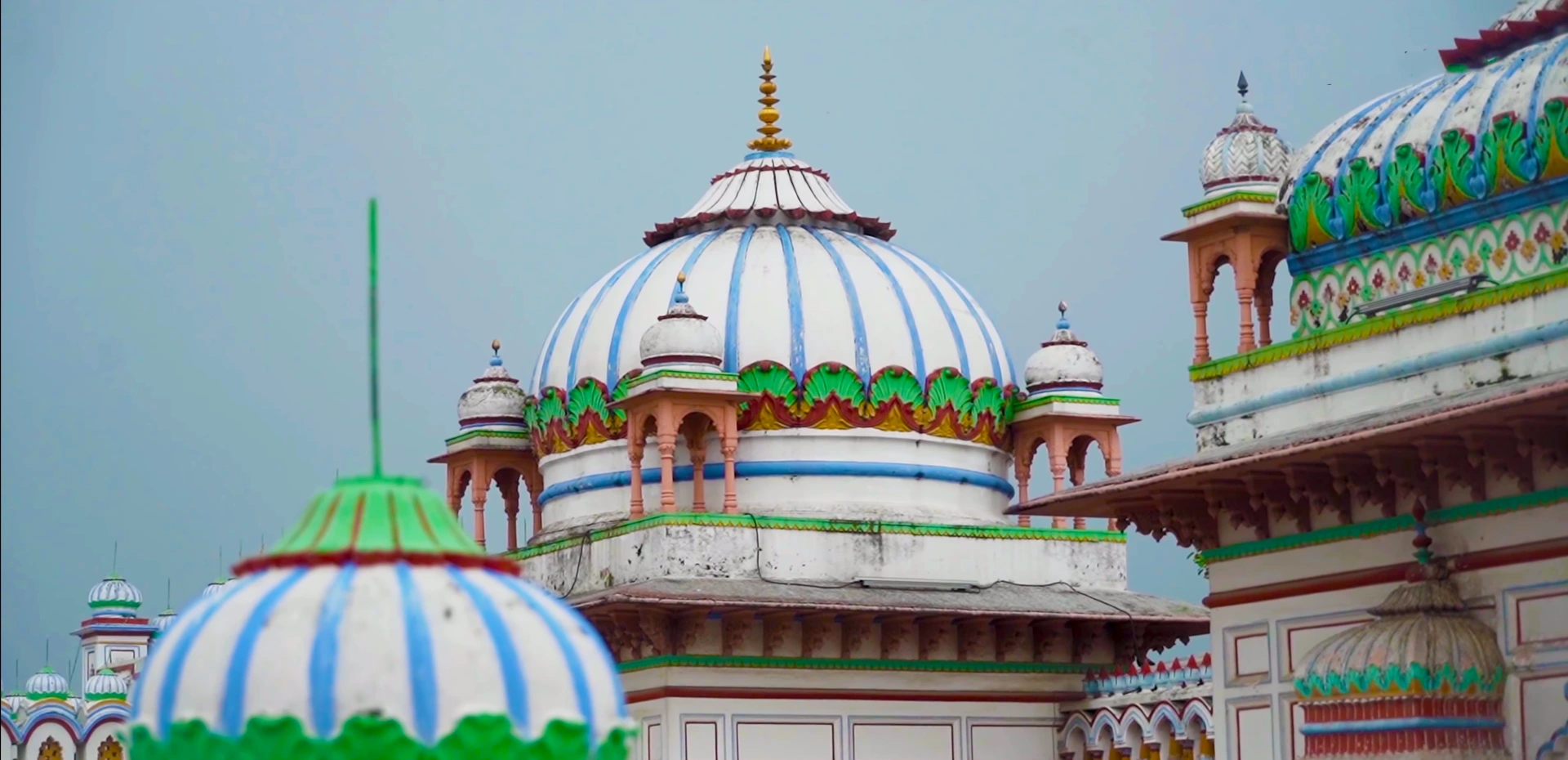
Janakpur’s oldest temple, Ram Mandir, is another must-see temple in Mithila. Amar Singh Thapa, a Gorkhali general, was the person to constructed it. This pagoda-style structure is situated to the southeast of the Janaki Temple. The Prince of Ayodhya, Ram is the temple’s principal deity. The Ram Mandir is a 10-minute walk from the Janaki Mandir and is located directly across from Dhanusagar. On the right side of the shrine are numerous Lord Shiva stone idols.
Vivah Panchami and Ram Navami are the primary holidays honored at Ram Mandir. On Ram Navami, the tithi (day) of Ram’s birth, special bhajans are sung. On Vivah Panchami, Ram Mandir and Janaki Mandir perform certain traditional marriage rituals on an equal level with one another.
Ram Sita Vivah Mandap
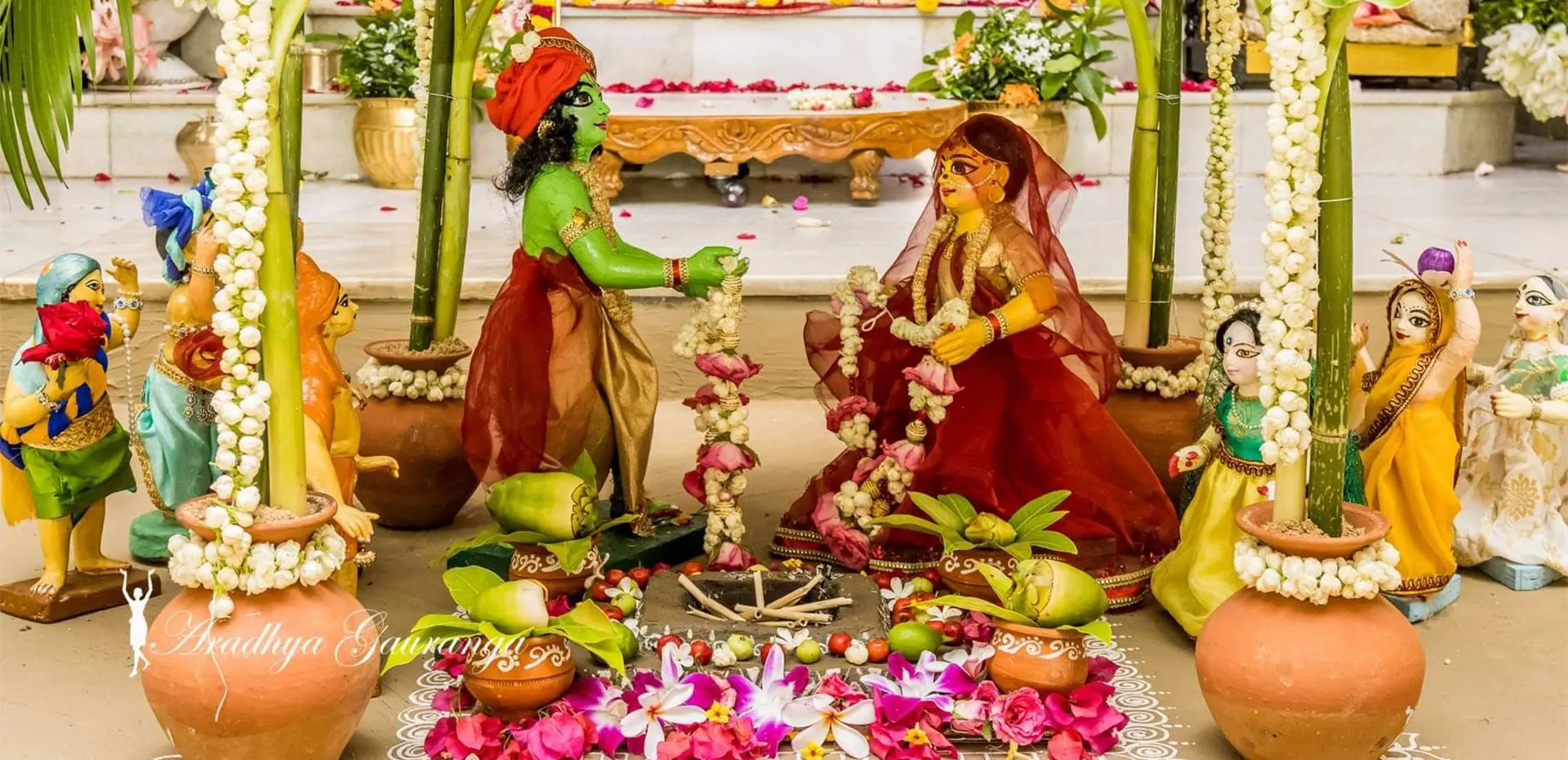
Ram Sita Vivah Mandap is another significant Janakpur attraction. Almost neighbouring the Janaki Mandir, this remarkable temple honors the site of the marriage ceremony of Lord Ram and Sita. Ram Sita, also known as Vivaha Mandap or Vivaha Mandir, is a pagoda made in the traditional Nepalese style.
In addition to this, you will also be observing the statues of Rama’s brothers. The pagoda was built to celebrate Rama and Sita’s wedding. This temple features a scene recreating the actual wedding. On the pillars are also demigods who came to witness the big event.
Dhanush Sagar, Ganga Sagar and Parshuram Kunda
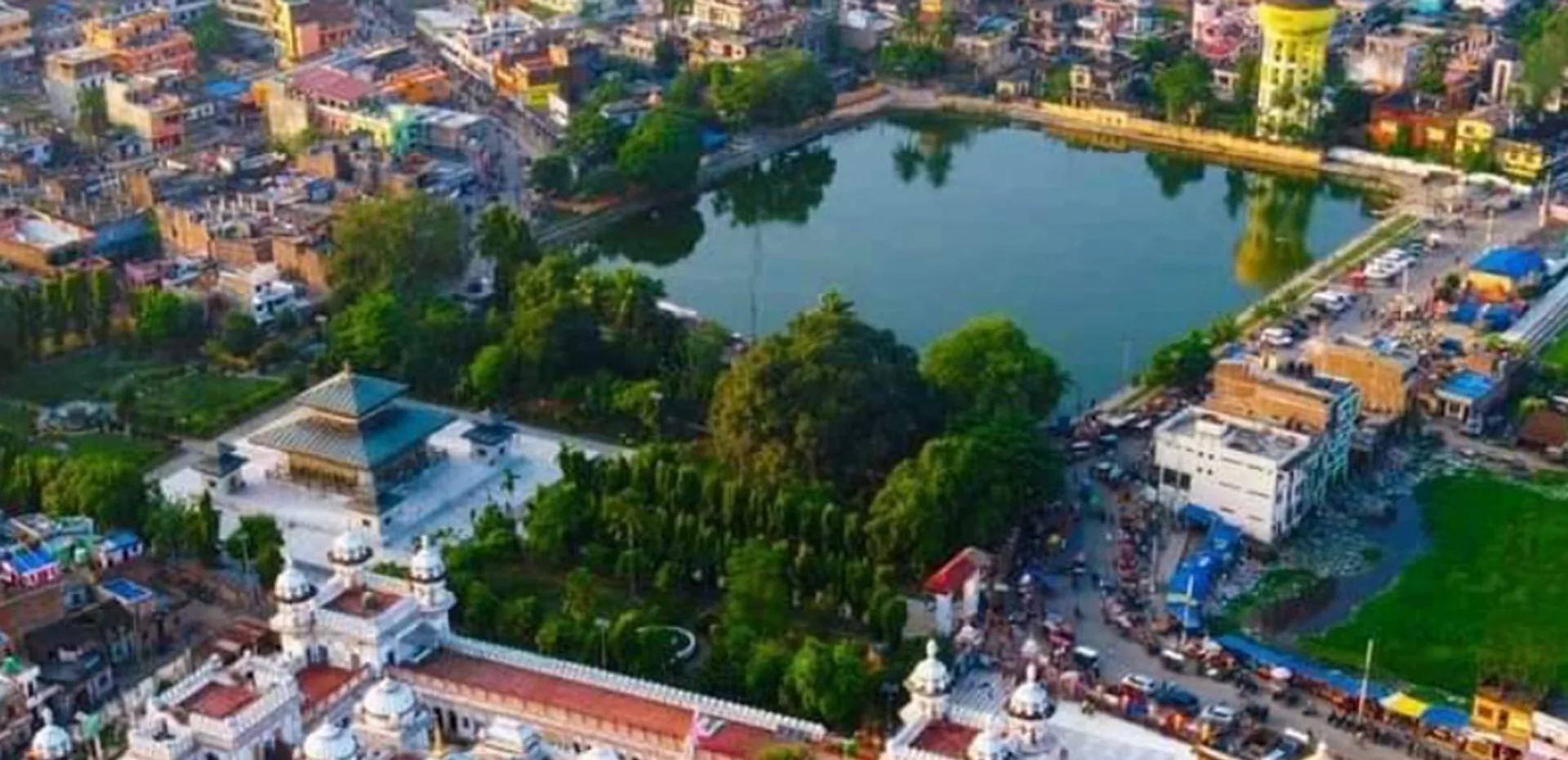
The Dhanush Sagar, Parshuram Kunda, and Ganga Sagar are the most famous of the numerous old ponds in Janakpurdham. The first two ponds are situated near the Ram Mandir, where morning religious ceremonies take place. It is said that King Janak constructed these ponds in preparation for the coming of the gods following the marriage of Lord Ram and Sita.
People think that the Parshuram Kunda is the pond under which Maharshi Parshuram took a bath to calm down after Lord Ram broke Shiva’s holy bow. Four kilometers to the west of Dhanushadham is a pond.
Jaleshwar
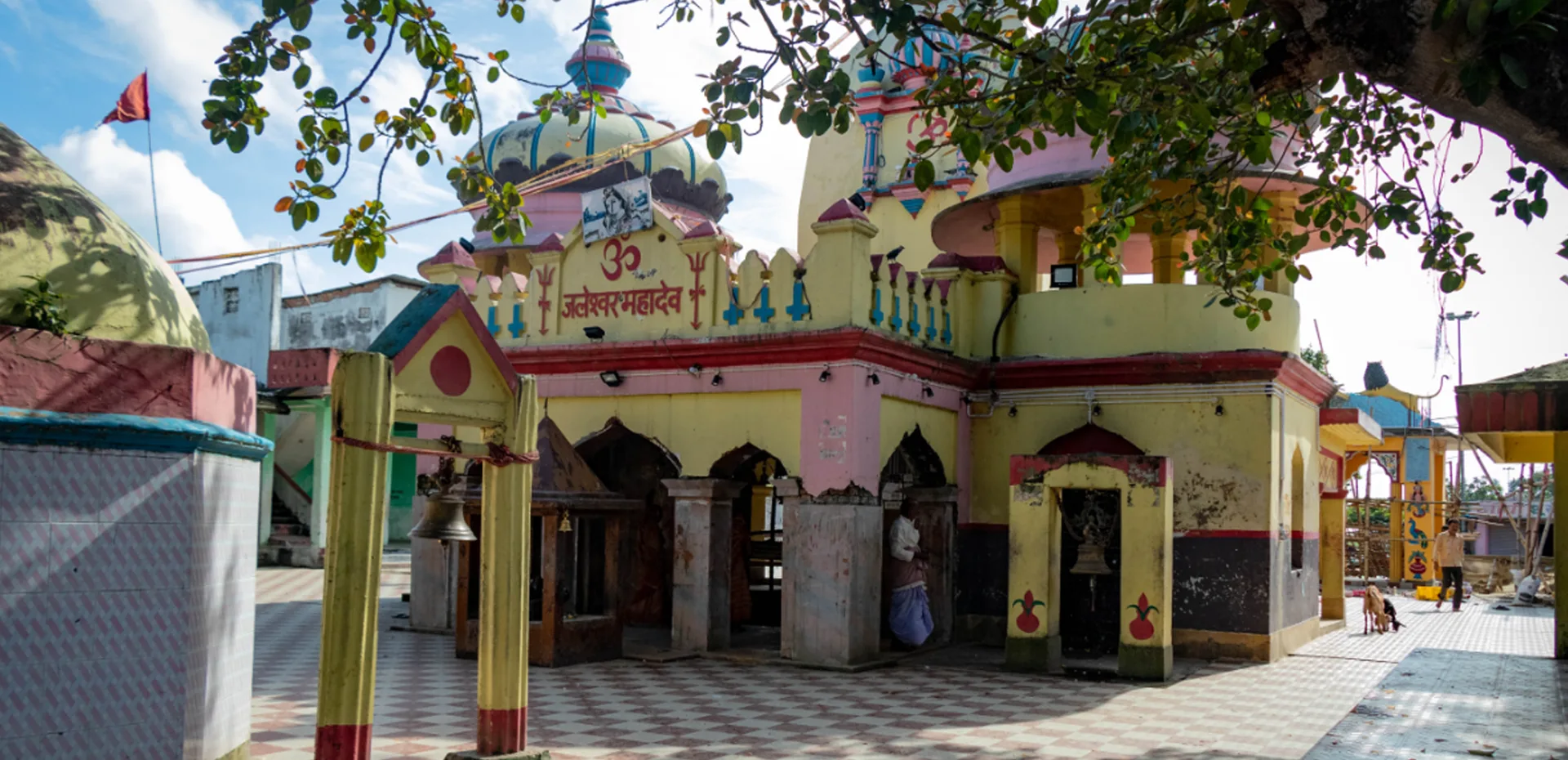
Jaleshwar is south of Janakpur and close to the border with India. The Lord Shiva temple in Jaleshwar, which is called Jaleshwar Mahadev, is one of the town’s most well-known sights. Inside the temple, there is a Shiva lingam that is 20 feet below the surface. Inside the temple, you can get to the Shiva Lingam by climbing a narrow set of stone steps. The temple is usually underwater, which is how it got the name Jaleshwar. On either side of the temple, there are two ponds.
Dhanushadham
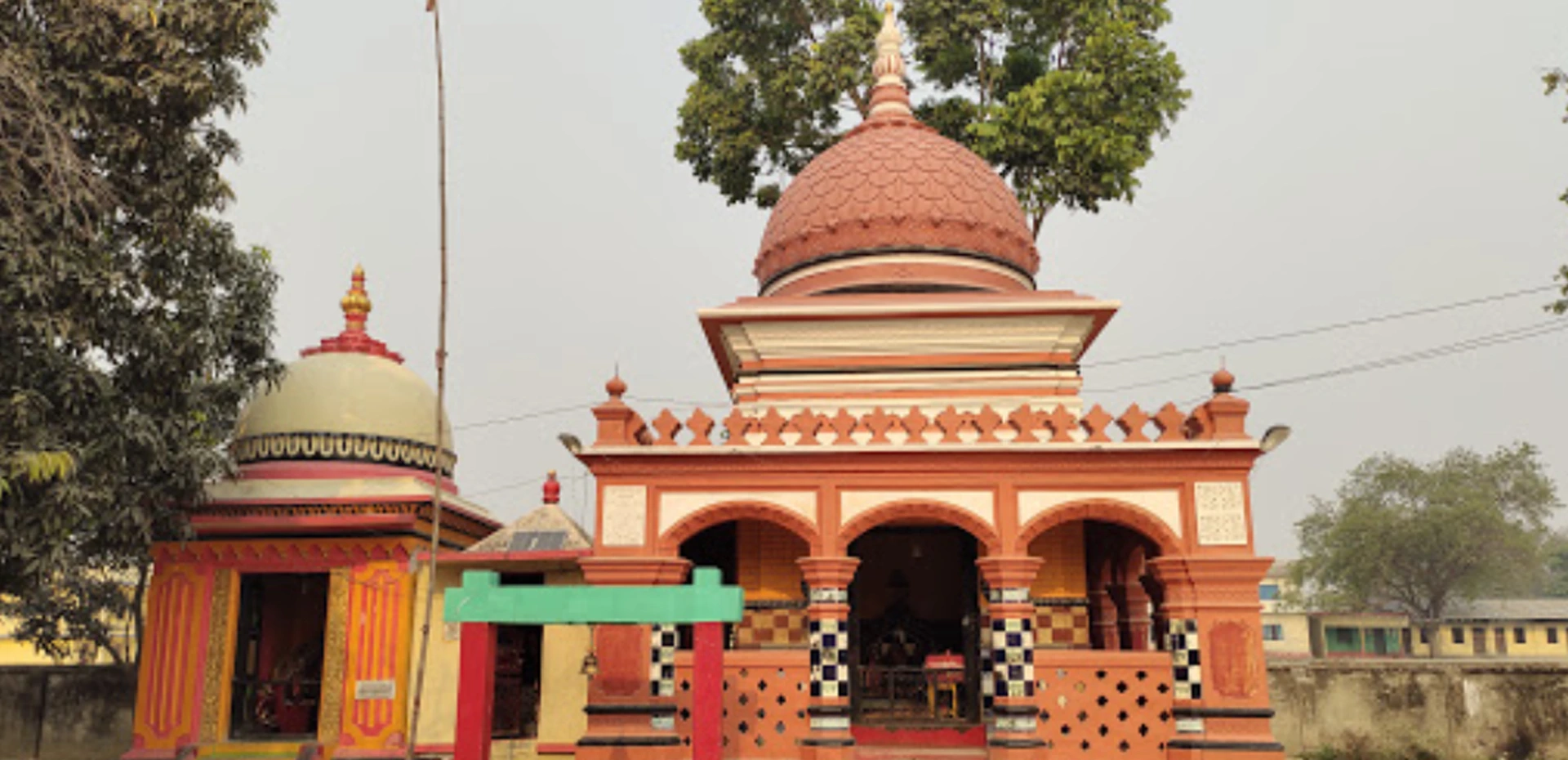
Janakpur Dham is 18 km to the north-east of Dhanushadham. The Dhanushadham is famous because it is where the pieces of the divine Lord Shiva bowl that Ram broke fell when he broke it. Some stories say that Ram and Sita did not get married until after he broke the bowl. People thought that the pieces of the broken bowl fell here in Dhanushadham. People still think that the place holds a piece of the broken piece.
Every Sunday in the month of Magh (January/February) in Dhanushadham, there is a fair called the Makar Mela. People think that going to the fair has been a tradition since the time of the Vedas. Thousands of people go to this religious site as part of a journey.
Traditional Villages
When roaming through all of the lists that were just given, make sure that you also travel to traditional villages and get involved with the way of life and communities that the local people have. One of the best ways to learn from each other and about ourselves is to learn about different people and their cultures.
The Mithila Art of Janakpurdham, Nepal
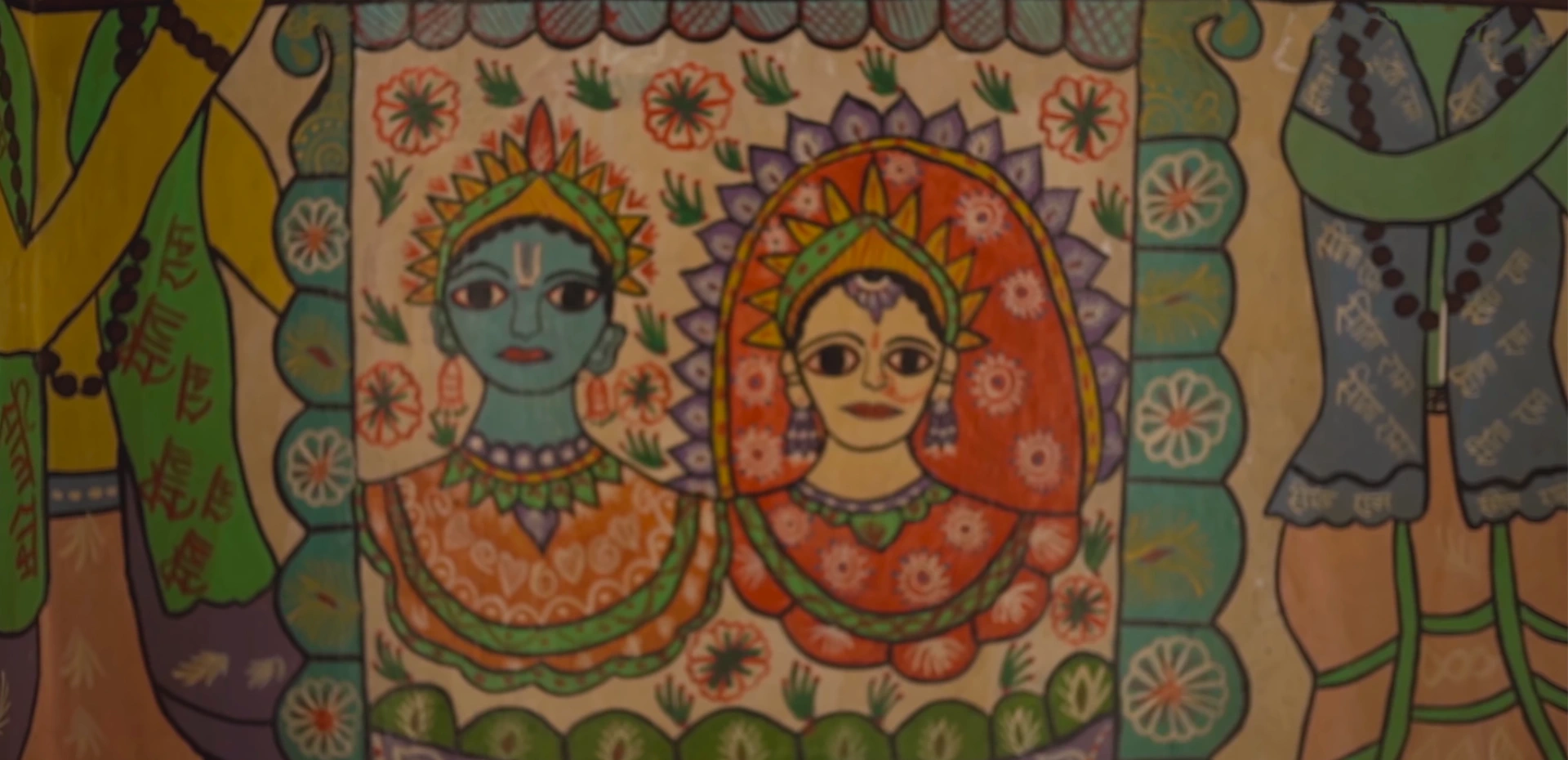
Mithila ladies have been practicing the Mithila art since the seventh century. Fingers, twigs, nib pens, brushes, and matchsticks are used to paint. The paintings use natural paints and dyes and feature distinctive, eye-catching designs.
During ancient times, Mithila art was used to decorate houses for festivities. The inhabitants painted the hamlet shacks in a manner that portrayed abstract patterns or images of village life. Even today, the walls of the houses in Janakpur, Nepal are still painted. However, the art practice has modified slightly in recent years.
The paintings of Janakpurdham Nepal represent contemporary life, particularly as it relates to women. The arts beautifully portray the way of life of rural women who lacked access to schooling. In addition, art is a beautiful depiction of the stages of village women’s lives, including employment, marriage, motherhood, and social networking.
Mithila paintings and artworks are currently gaining recognition throughout the globe. The paintings are, on the one hand, a means of promoting the Mithila culture and, on the other, a means of empowering rural women.
Janakpur Women’s Development Centre
Janakpur Women’s Development Centre is a non-profit organization that offers women business and vocational training so that they can support themselves. Initially, Mithila-typical paper art was taught to women, but now they also receive instruction in sewing, screen-printing, pottery, and painting. Its goal is to encourage Mithila arts as well as empower Maithil women through the use of their skills to make money in art and craft production.
Janakpur Dham Nepal is a holy city with a vast range of cultural customs, creative expressions, religious traditions, and unique languages. The best months to travel to Janakpurdham, Nepal are May, July, and August.
People who want to learn about Maithil culture often go to Kuwa village in Janakpur, Nepal, to see the gorgeous training and production complex. The center has given training to a lot of women so far. “Janakpur Art” is the name for the arts and crafts made and designed at the center. Currently, around 50 women work at the center in five different areas to make fine art, textiles (such as silkscreen and embroidery), ceramics, and papercrafts.
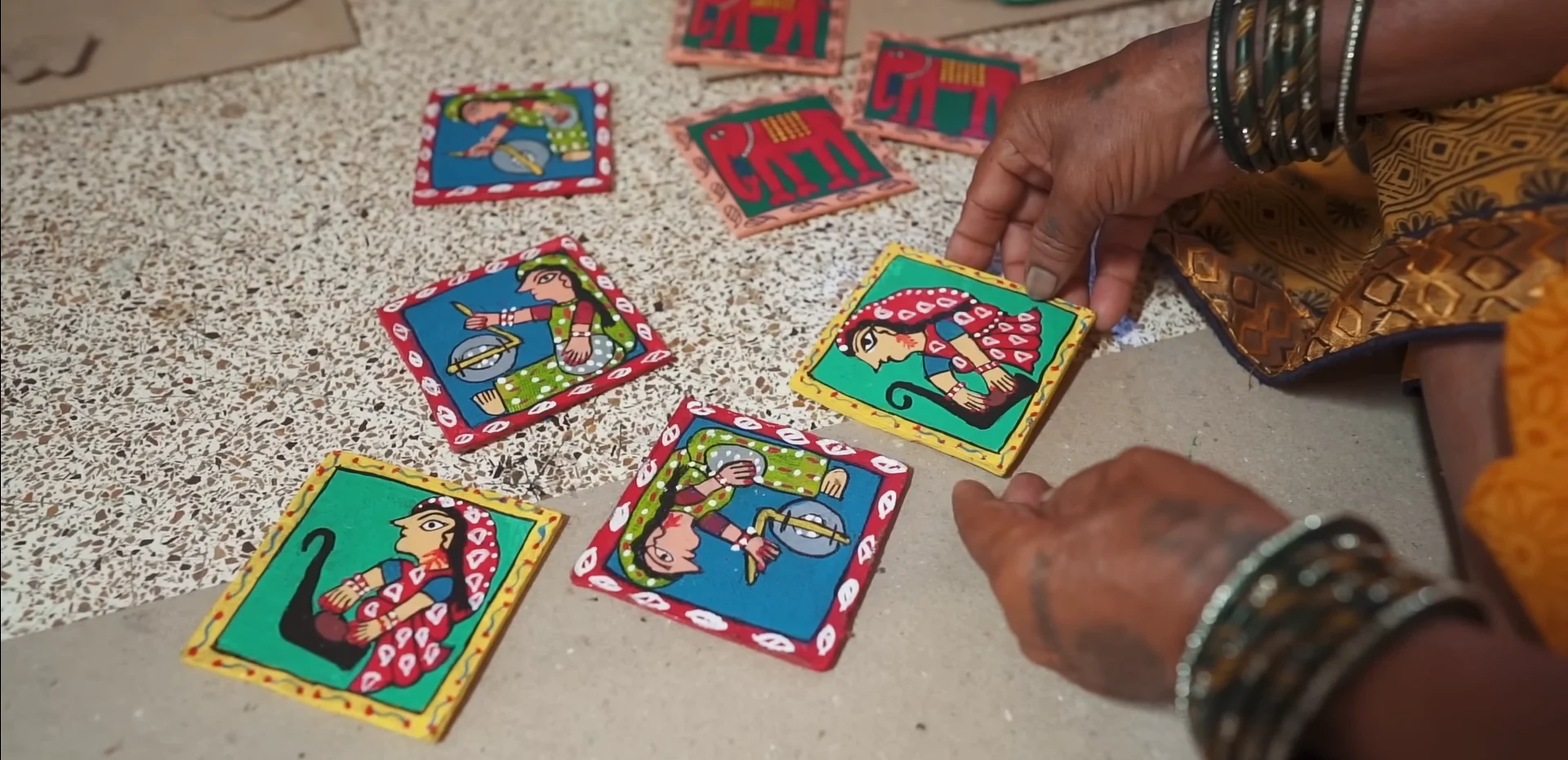
Frequently Asked Questions (FAQs)
What is the distance between Janakpur and Kathmandu?
The Janakpur-Kathmandu distance is 125 km (kilometers) and 800 meters.
What is the Janakpur-Pokhara distance?
The distance between Janakpur and Pokhara is 258 kilometers, but the distance on the road is 371.6 kilometers.


